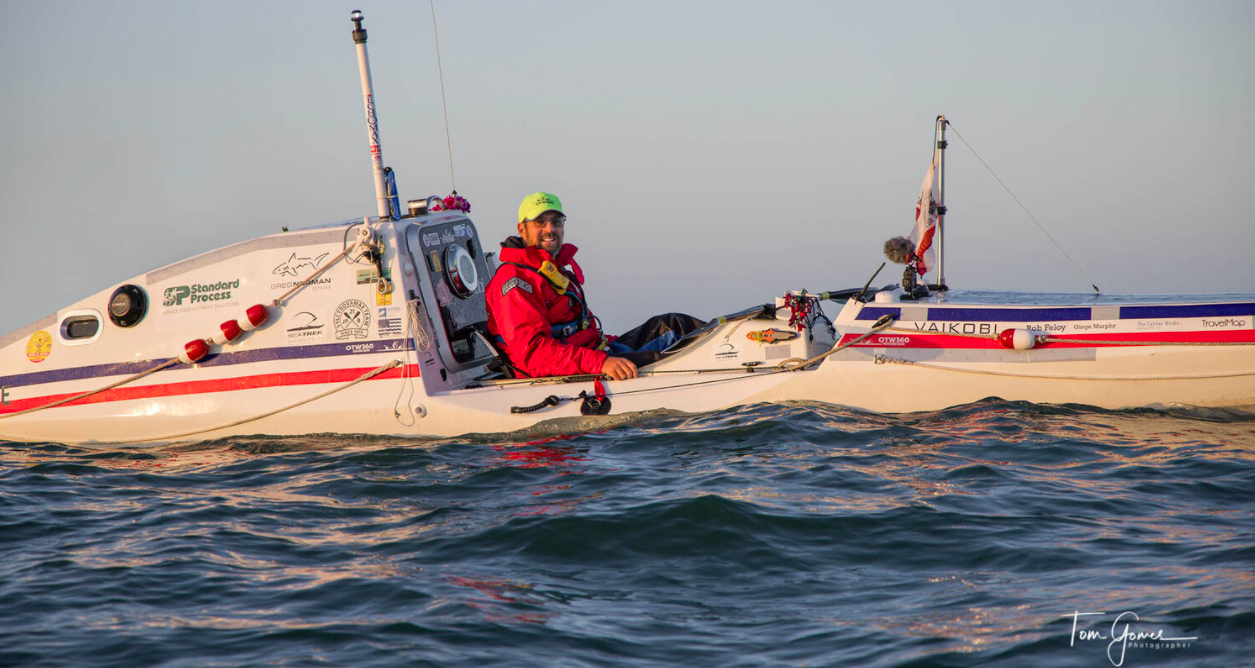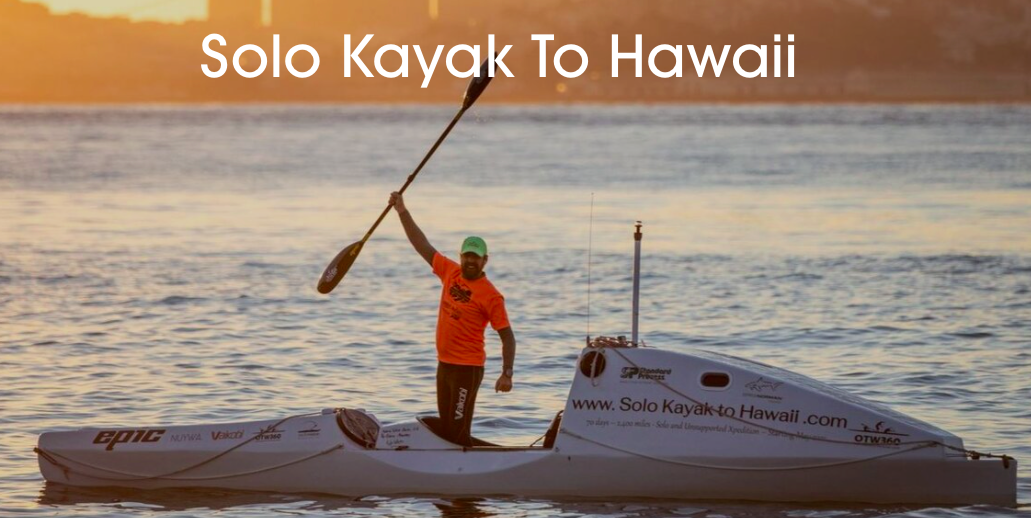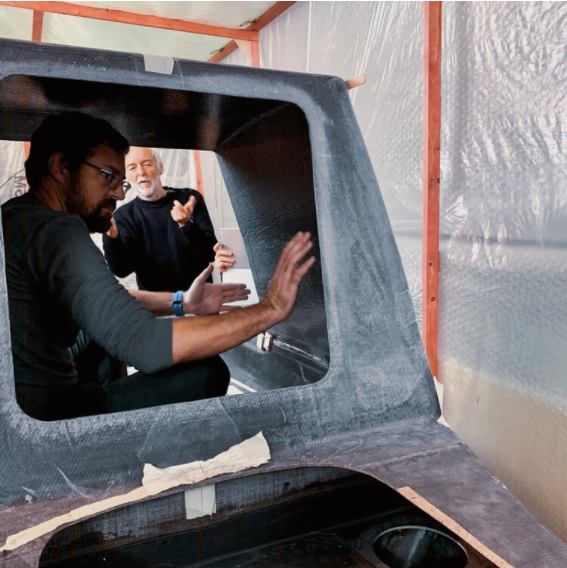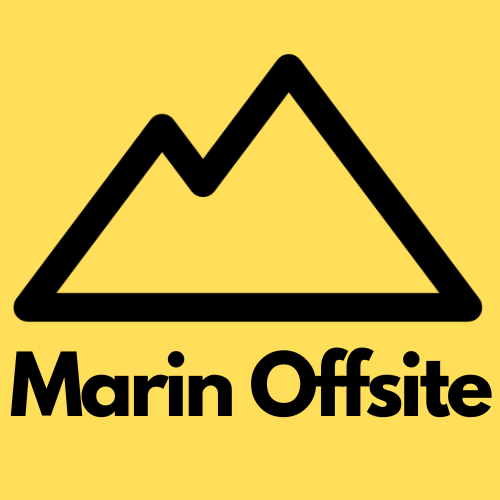Tam Glad Exclusive: Cyril Derreumaux, local adventurer following his dream to solo kayak unsupported from California to Hawaii 💪



The short history of solo unsupported sea kayaking across the Pacific from California to Hawaii
In 1987, Ed Gillet, an ocean explorer kayaked solo unsupported from Monterey, CA harbor to Maui, Hawaii in 64 days across 2,200 miles. This was and is still considered one of the greatest feats in transocean exploration. Since his original pacific crossing by kayak, it has yet to be repeated.
The story
It’s funny to think about dreams… We all once were at a point in our lives (usually in our youth) when we would dream to be something or accomplish something amazing. That thing could be anything as long as it’s big. These dreams unfortunately seem to have an expiration date at some point. Inevitably the winds of today’s society start to blow hard against those dreams and like a sneaker wave (prone to bay area beaches) crash on top of you out of nowhere. The once fantastical wonder of what could be eroded only to reform in a new career path, potentially more structurally sound (unlike the millennium tower). All jokes aside, as I write this it feels as if I’m dealing with my own thoughts on what it means to dream, to sail towards it, to be passionate for what amazing means to me. But, this is not my story.
I’m writing this story about Cyril Derreumaux, 45 years old, father of two boys, explorer, fluent in 6 languages, and an adventure seeker. This June, he will make his second attempt at kayaking from San Francisco, CA to Oahu, Hawaii. The journey will be 2,400 nautical miles for approximately 60-70 days in a 23 foot custom kayak unsupported at sea, meaning he will be alone for every mile. He will have a support team on land to monitor his progress, take health checks (which i’ll address later), and provide professional guidance and decisions when necessary. This journey by definition is what a dream not deferred is all about.
We met in person at the Sausalito harbor where his custom kayak named Valentine (the name of his sister) is currently moored. An interesting note is that he grew up in France but after a year abroad in the United States, he decided that making a life here would be part of his story. In my honest opinion it doesn’t get much better than Marin County. Coming from a tight knit French family, he came to the United States and gained dual citizenship. There wasn’t enough time for us to explore all of his adventurous pursuits as we were focused on the present, but as you’ll see on his website, he has been in passionate pursuit of his adventurous dreams for quite some time including long-distance sailing and kayaking. Some examples include Yukon River Quest (444 mile paddle), 4x Molokai Hoe (outrigger race from Molokai to Maui), 1,200 mi bike trip across Togo, Africa, and winning the Great Pacific Race. The Great Pacific race, a premier trans-pacific ocean rowing race, was a monumental win for his team. He held the Guinness book of world records for the quickest time rowing across the Pacific with 39 days at sea. We could spend days unpacking his multitude of adventures but that would take far too long and I'd assume we would approach the length of a novel. What I will say is that he has proven that passion can drive you to achieve what you never thought possible and while these adventures are his, we can use his example to inspire our own passionate ambitions.
Back to our meeting. He invited me to see his kayak and chat about his upcoming trans-pacific journey. I initially was elated because I could connect with his journey in a literal way. Prior to my illustrious writing career, I spent 8 years as a Naval Officer and actually made the journey from California to Hawaii by Navy warship about a dozen times. Hawaii makes a great stopping point for any Navy warship on its way across the Pacific and beyond. He would be alone in a kayak making a few knots and I was steaming at about 15-20 knots with 275 of my “best friends”, but I digress.
We stepped down a ladder connected to the pier which was quite vertical and totally “worked” with my rainbow sandals. After taking a short stroll on the pier I hear, “there she is!”. The custom kayak I had read about and seen on the news one year prior was tied up, slightly rocking on the uncharacteristically glassy day in the bay. When examining the kayak and standing next to him, I couldn’t help but think about the stark contrast between what I’m seeing at that moment and what he has and will experience at sea. This almost motionless boat, peaceful and stagnant, would assuredly be tossed side to side and up and down sometimes violently for every mile of the journey. With not a ton of time to ask every question and cover every aspect, I just start listening.
He takes me through the kayak from bow to stern and outside to in. With 23 feet to work with, every part of the kayak has to be custom-made for this specific journey. Before I give you all the details I think it’s important to mention he has an expert team of support staff who will be listening and communicating from afar. He explained to me that he will be reporting to his team every day a health check (1-10, 10 being the best) on three things: The man, the boat, and the weather. This simple checklist will be administered every day for approximately 80 days. So in that spirit, I can use this checklist to summarize our discussion.
The man
Since he already made the crossing by rowboat he understands to some extent the conditions by which he will be subjected to. However, this will be one man vs four in the boat. Sea sickness and muscle atrophy are all part of the experience. The first 15 days are the hardest which will include sea sickness and sleep deprivation. He will be carrying enough food for the journey consuming roughly 6,000 calories per day in bags specifically packed for his diet. Fresh water and hydration will be crucial. He can make water by using a reverse osmosis system which essentially strains enough ocean water through fine membranes to provide him water for drinking through a small tube. Practically speaking he will continue to relieve himself in various ways so don’t worry, I’ll spare you the details lol. Sleep will undoubtedly occur but in short increments waking up every hour to check his position (location) and for any marine traffic in the area. As you can imagine a 23 foot kayak while seen on radar could potentially be missed by a 1000 foot tanker steaming towards its destination. This truly is a test of conditioning, preparedness, emergency readiness, and mental toughness. At this point, I want to ask a million more questions about his preparation and dealing with these struggles, but again I don’t have time to write the novel. As previously mentioned he will make a call to his support team with a personal health status between 1-10. This seems like a simple system, but when up against the open sea with potential dehydration, fatigue, hallucinations, this number could mean everything.
Typical daily schedule:
Wake up before sunrise, eat breakfast
Start paddling 4-5hrs
Break for lunch
Paddle 4-5 hours until night
Sunset prepare for the night
Wake up every hour during the night to check for boat traffic and conditions
Repeat every day 60-70 days
The boat
The 23 foot custom kayak was built by Rob Feloy, a world renowned boat builder and specialist. It is specifically designed for this journey, everything from the rudder to the bow. The length of the bow and aft cabin are both covered in solar panels which will charge two lithium ion batteries, enough to provide sustainable electricity for the onboard electrical systems (mostly used for navigation). Every electrical system has the main source and a redundant source. Meaning, that if one system fails, another will be available. In the cockpit of the kayak where he’ll be paddling from is enough room for his legs. Forward of his legs inside the bow will be his carefully packed bags of food. He will also have a Hobie pedal system which will allow him to move his feet back and forth to make forward progress. This serves two purposes, it will combat muscle atrophy and will keep him moving forward while eating or resting.
The aft cabin is incredibly important and ultimately his home away from home. On top are mounted several antennas providing positioning and communications capabilities. Inside the radar systems and communications equipment are installed on the starboard side (right side). From this tiny command center, he can radio his support team, send text messages, and monitor his progress at any time. Lights inside the cabin are added and can be either blue or red depending on the time of day. For those who’ve not been at sea at night, the red light is the best color so that it does not distort your vision as much as white light would at night. In addition to the practicality of the inside lights, there are two tiny computer fans used to keep the cabin cool. As Cyril quickly pointed out, “the second part of the journey will be hotter and cooking inside”.
Maneuvering in and around the kayak is quite the feat. One must always stay close to the centerline to keep yourself balanced. Stepping onto the boat I felt as balanced as an elephant on a tightrope. Any lean to either side surely would put you in the water. Perfectly acceptable while moored to the pier but quite the opposite in the middle of the Pacific. He showed me the basics of living inside the cabin. It’s roughly six feet in length, three feet wide, and three feet tall. He maneuvered into the cabin quite easily as he’d done a thousand times before. That’s when he said, “would you like to come inside and see what it feels like?”. Jumping at the chance I stepped onto the kayak, turned my body facing forward, and stepped my legs back in a plank motion. Slowly and clearly uninitiated I backed up into the cabin, turned, and laid down with my feet almost touching the end. Now having spent years at sea sleeping on navy ships I thought wow, this kind of feels like home. But as I quickly learned, it was not. He closed the hatch to the cabin and began to roll the kayak back and forth while I was laying in it. The listing motion was so pronounced that my body almost flipped over several times. This was the closest to understanding his journey than I will ever be. After about a minute, he re-opened the hatch, “how was that?” he said. “Holy shit!” I replied. With some core strength, I crawled out of the cabin and back onto the pier. How do you even proceed after this I thought? The feeling of one minute in a protected harbor pales in comparison to what was ahead for the mighty Valentine.
Lastly, and probably the most interesting to me is the sea anchor. Let’s remember while at sea the ocean never sleeps and is in constant motion. The winds, sea state, and weather will be barreling down on the kayak at all times. That’s where the sea anchor comes in. Think of it as a giant parachute underwater which when deployed during the night will hold the kayak in relatively the same position. If the kayak was to drift off course immensely, he could lose valuable time and have to make up miles essentially making it impossible to reach Oahu. So, when conditions dictate the sea anchor will be deployed with about 150 feet of line and retrieved every day upon resuming the journey.
So, this is all to say that when it comes to the kayak, its design and construction means everything. The equipment and systems need to be available and when they are not, redundant systems are ready. This is the nature of life at sea. To review, every day he will give a boat status update to the support team 1-10.
The weather
He will be starting the journey sometime in June when the weather window shows three days of good conditions. This will be paramount as he needs to get offshore as fast as possible before the potentially strong winds start to push him back towards the coast. As one can imagine the general sea state will be monitored both by him and the land based support team. Frequent updates will allow the team to consider any number of weather related decisions. Sea state, wind speed, rain, and any other type of weather phenomena are possible. This time of year should be ideal for an attempted crossing but when it comes to open ocean anything is possible.
The first attempt
It is important to note that this will be his second attempt at making the solo kayak to Hawaii. Last year during his first attempt he faced some punishing weather conditions forcing him to be locked inside the tiny cabin for three days straight. Ultimately with his support team, the decision was made to call the coast guard for an immediate rescue at sea. Thankfully being trained in emergency preparedness the rescue was smooth as could be expected. Several days later the kayak was retrieved, still floating in the Pacific mostly unscathed.
This concrete example of when things don’t go as planned only highlights the tremendous lengths that he goes through to be prepared. Ed Viesturs, a world renowned high altitude mountaineer in a Time article explained the decision to abandon a bid for the summit of Everest just 300 feet from the top due to inadequate conditions. “Viesturs didn’t accomplish the feat until his third try in 1990. “For me, it was one of those dream-come-true moments,” he recalled. He had come close to reaching the top before that but turned around, 300 feet from the summit, due to grueling weather conditions. The decision likely saved his life. “It was a goal of mine and a dream, and the reason I took so long was that I was willing to walk away when I needed to,” he said. (Melissa Chan, TIME Magazine) I think we need to respect the decisions of those humans willing to explore the boundaries of their potential remembering that it’s their life on the line not ours. Every explorer calculates their risk tolerance and where the line exists.
The journey ahead
Until he casts the line for the final time in Sausalito harbor this June he will be training and preparing. As we wrapped up the conversation it was clear that he would reduce the distractions (mainly media engagements) in the lead up to the departure. While this journey will inspire others, it still starts with the man inside the kayak and every ounce of preparation must be focused on that. So what do I think you should take away from this story? Well, give it some thought… In my mind, it’s knowing that exploration may unlock preconceived notions and dogma about what can be done. I believe that if one person can show the world how far we can go, it can open the consciousness of thousands to do the same.
“Through my own adventures I hope to inspire others to follow their dreams, to live a life less ordinary and find the things that make them feel truly alive.” - Cyril Derreumaux
Other interesting items:
My favorite blog post by Cyril: Letter to my beautiful kids
How to track Cyril on his journey:
Website: Marine Traffic
Search: OCEAN KAYAK VALENTINE
MMSI #: 368175780
